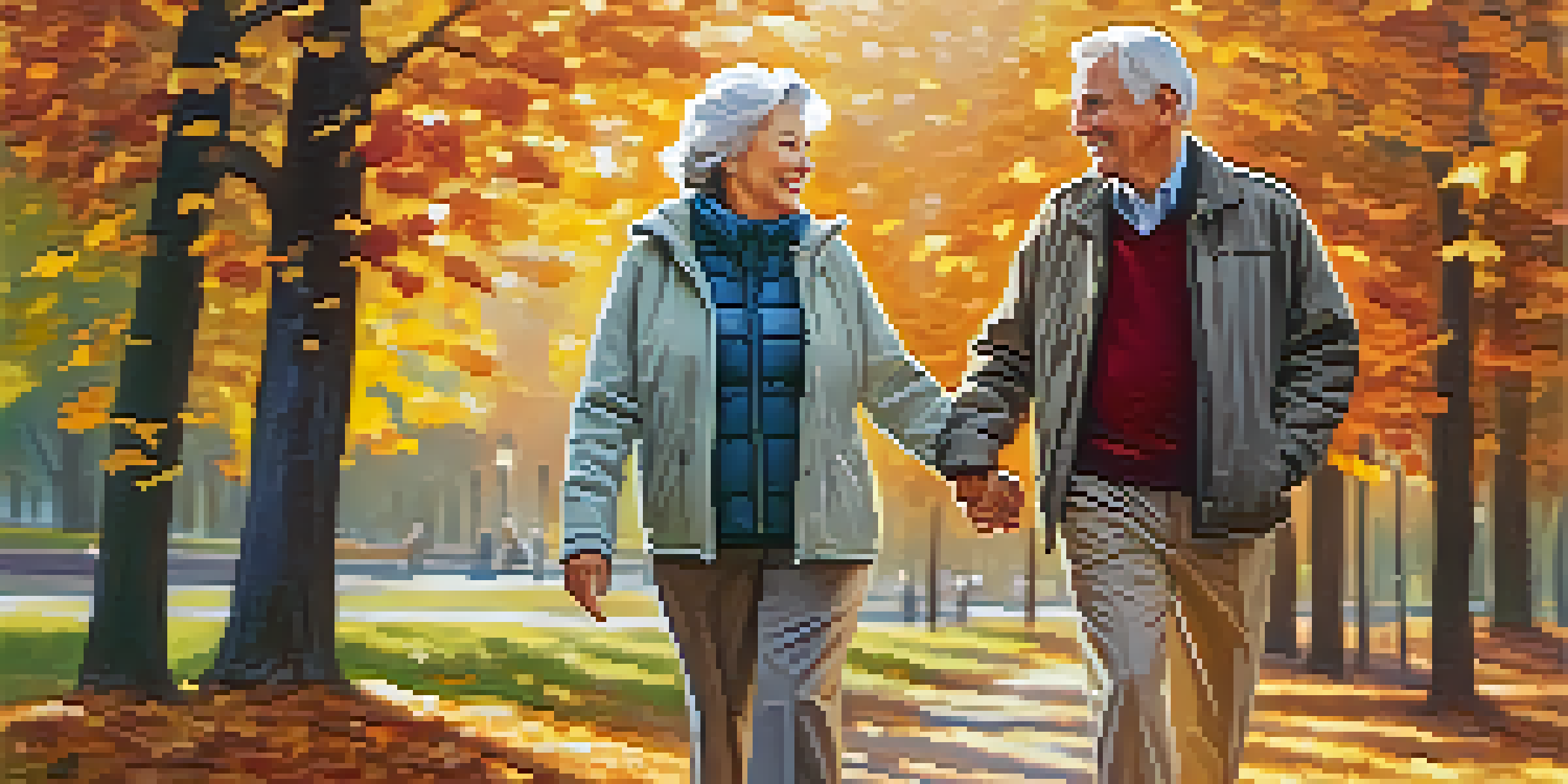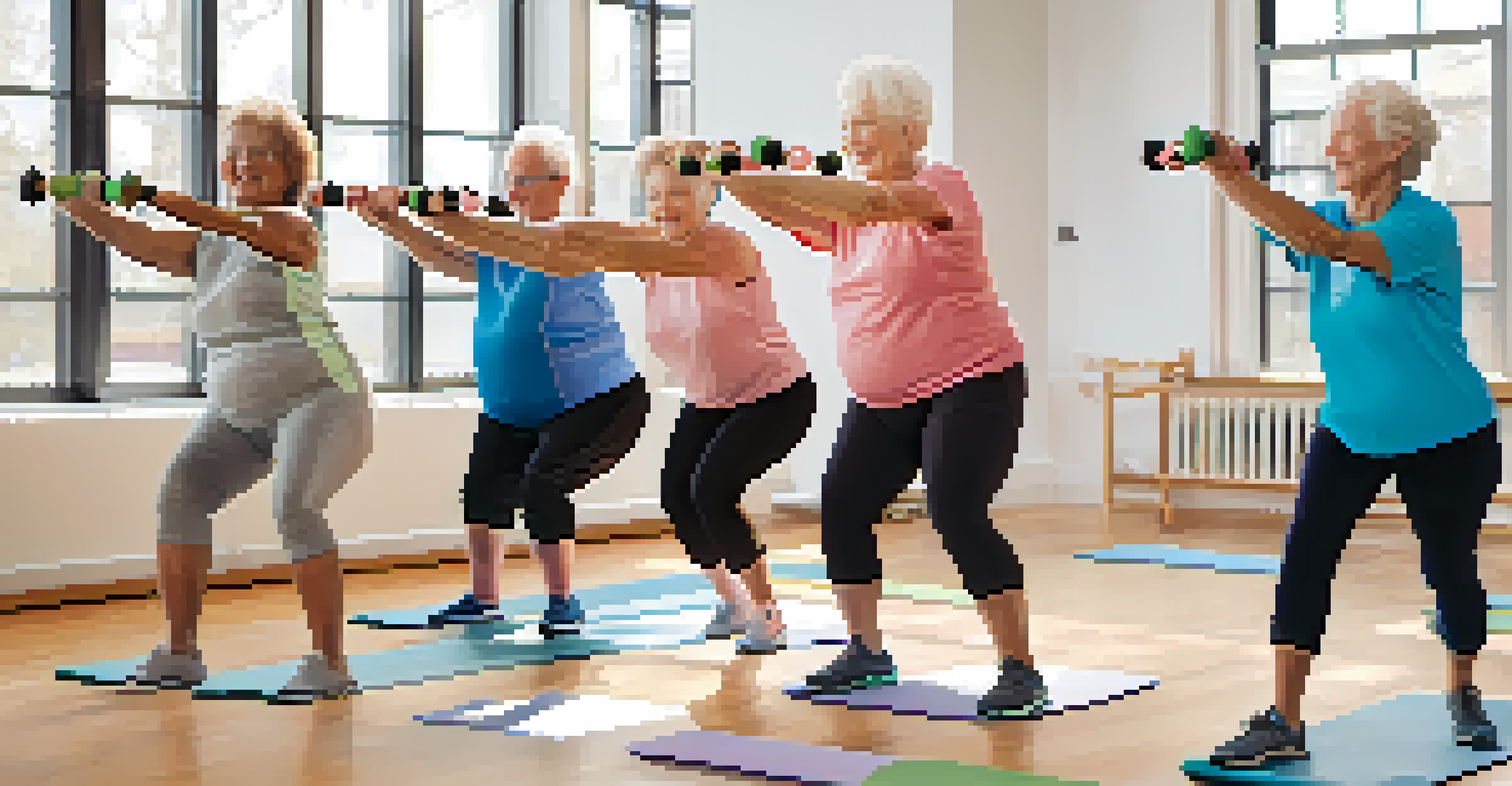Tailoring Fitness for Seniors with Heart Conditions

Understanding Heart Conditions in Seniors
Heart conditions can vary widely, affecting seniors in different ways. Common issues include high blood pressure, arrhythmias, and heart valve problems. Understanding these conditions is crucial for tailoring a fitness plan that ensures safety and effectiveness.
The greatest wealth is health.
As we age, our hearts can become less efficient, but that doesn’t mean we should avoid exercise altogether. In fact, regular physical activity can help manage symptoms and improve overall heart health. It’s essential to recognize individual limitations while also promoting heart-healthy habits.
Consulting with a healthcare provider is a great first step. They can offer personalized advice based on medical history and current health status. This ensures that any fitness plan is not only safe but also beneficial.
Benefits of Exercise for Seniors with Heart Conditions
Exercise can offer numerous benefits, especially for seniors dealing with heart issues. It can improve circulation, strengthen the heart muscle, and even lower blood pressure. These effects can lead to a more active lifestyle and increased independence.

Additionally, regular physical activity can enhance mood and mental well-being. Engaging in group classes or outdoor activities can foster social connections, reducing feelings of isolation that some seniors may experience.
Exercise Benefits Heart Health
Regular physical activity can improve circulation, strengthen the heart muscle, and enhance overall well-being for seniors with heart conditions.
The key is to find enjoyable activities that fit personal preferences and capabilities. Whether it’s walking, swimming, or gentle yoga, incorporating movement into daily life can make a significant difference in heart health.
Creating a Safe Exercise Routine
When developing a fitness routine, safety must be the top priority. Start with low-impact activities to minimize the risk of injury. Gradually increasing intensity can help build endurance without overwhelming the body.
Movement is a medicine for creating change in a person's physical, emotional, and mental states.
It’s also essential to include warm-up and cool-down periods in any exercise routine. These phases help prepare the body for activity and allow it to return to a resting state safely. Stretching can enhance flexibility and reduce muscle stiffness.
Monitoring how the body responds during exercise is vital. Seniors should pay attention to any signs of discomfort or fatigue and adjust their routines accordingly. This self-awareness can prevent complications and promote a sustainable fitness journey.
Incorporating Cardiovascular Exercises
Cardiovascular exercises are particularly beneficial for heart health. Activities like brisk walking, cycling, or swimming increase heart rate and improve circulation. Even light activities can yield positive results when performed consistently.
For seniors, finding the right pace is crucial. Aim for at least 150 minutes of moderate-intensity aerobic activity each week, spread over several days. This can be broken down into shorter sessions, making it more manageable and less daunting.
Safety is Key in Fitness Routines
Starting with low-impact activities and monitoring how the body responds helps ensure that exercise is safe and effective for seniors.
Using tools like a heart rate monitor can help ensure that exercise remains within a safe range. It’s a simple way to track progress while maintaining the focus on heart health.
Strength Training for Heart Health
Strength training is often overlooked but can be incredibly beneficial for seniors with heart conditions. It helps build muscle mass, which can improve metabolism and overall strength. This is especially important as muscle mass tends to decrease with age.
Incorporating light weights or resistance bands into a routine can provide significant benefits. Aim for two days a week of strength training, focusing on major muscle groups while ensuring proper form to prevent injury.
Remember, this does not mean lifting heavy weights. Bodyweight exercises, such as squats and wall push-ups, can also be effective and safer for beginners. The goal is to enhance physical function and support heart health.
Flexibility and Balance Exercises
Flexibility and balance exercises play a vital role in a well-rounded fitness routine. Activities like stretching, tai chi, and yoga can improve flexibility, making everyday movements easier and more comfortable. This is particularly important for seniors to maintain independence.
Balance exercises are crucial for fall prevention, which is a significant concern for older adults. Simple practices, such as standing on one leg or heel-to-toe walking, can enhance stability and confidence while moving.
Listen to Your Body's Signals
Being aware of signs like shortness of breath or lingering fatigue during exercise is crucial for seniors to maintain safety and health.
Incorporating these exercises into a weekly routine ensures that seniors not only work on their cardiovascular and strength goals but also maintain overall mobility and safety.
Listening to Your Body: Signs to Watch For
Listening to one’s body is essential, especially for seniors with heart conditions. Be aware of signs like unusual shortness of breath, chest pain, or dizziness during exercise. If these occur, it’s crucial to stop and rest immediately.
Additionally, fatigue that lingers long after exercising can be a red flag. It’s important to differentiate between normal tiredness and something more concerning. Keeping a journal of physical activities and how one feels afterward can help track patterns.

Consulting a healthcare provider if any concerning symptoms arise is vital. Open communication with medical professionals can provide peace of mind and ensure that the fitness journey remains safe and effective.